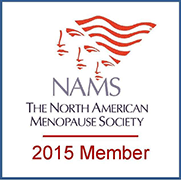Health Issues
What is High Blood Pressure?
Blood pressure changes through out the day depending on physical activity, rest, emotions, and whether you are standing, sitting, or lying down.(1)
The only way to know if you have high blood pressure is to have your healthcare provider check for it. It is recommended by the Heart and Stroke foundation that healthy individuals should have their blood pressure checked once every two years by health care profes- sional.
Blood pressure is always recorded in two numbers such as 120/80 mmHg (millimeters of mercury).(5)
Systolic- is the top number measures the pressure in the arteries when the heart beats.
Diastolic-is the bottom number measures the pressure in the arteries when the heart is resting between beats and filling with blood. (4,6)
High blood pressure or hypertension is diagnosed when the blood pressure reading is 140 (or higher) systolic, and 90 (or higher) diastolic based on the average of two or more readings on two separate occasions.(7) However, a person with diabetes can be diagnosed with high blood pressure if the blood pressure reading is 130/80 mm Hg or higher.(2)
Risk Factors
•Family History-your risk increases if your parents, grandparent, or siblings have high blood pressure
•Age- your risk for high blood pressure increases with age, and occurs most often in people older than age 35
•Ethnicity- high blood pressure is more common among people who are of African, South Asian, First Nations/Inuit or Metis Heritage
Lifestyle Factors
•Lack of physical activity
•Heavy alcohol use
•Salt- having too much salt in the diet
•Being Overweight or Obese
•Stress (8,9)
Taking Control of High Blood Pressure
Keep your blood pressure within the normal range by following these recommendations from Heart and Stroke Foundation of Canada and the Canadian Hypertension Education Program. Making lifestyle changes is the best way to control blood pressure.
-People that have been diagnosed with high blood pressure or other conditions that can affect blood circulation may require more frequent blood pressure monitoring.
-Be physically active for 30-60 minutes per day most days of the week
-Reduce your sodium intake by at least 10%. Dietitians of Canada recommend that individuals should have less than 2300 mg of sodium per day (a teaspoon of salt contains 2300 mg of sodium).
-Reduce your alcohol intake
-If you are a smoker, make a plan to cut back and quit.
-If you are overweight, losing approximately 10 lbs (5 kg) can help you lower your blood pressure. (10,11,12,13)
Created by Mia Kubrak for The Women’s Midlife HealthProgram
Nursing Education Program of Saskatchewan
February 2010
1 Heart and Stroke Foundation (2007). Get your blood pressure under control. Retrieved January 27, 2010 from http://www.heartandstroke.com/atf/ cf/%7B99452D8B-E7F1-4BD6-A57D-B136CE6C95BF%7D/BP_Brochure_ENG.pdf
2 Canadian Hypertension Education Program (2009). Hypertension in diabetes. Retrieved January 25, 2010 from http://hypertension.ca/bpc/wp- content/uploads/2009/03/final2009recommendations-march-12.pdf
3 American Heart Association (2009). Understanding Blood Pressure. Retrieved January 29, 2010 from http://www.americanheartassociation.com/ presenter.jhtml?identifier=2112
4 Heart and Stroke (2009). What’s killing us? Retrieved January 26, 2010 from http://www.heartandstroke.sk.ca/atf/cf/%7B6C89E785-1760-4813-9070 FF7CFFCE319D%7D/HSFS%20Annual%20Report%202008_2009.pdf
5 Public Health Agency of Canada (2009). Diagnosing Hypertension. Retrieved January 29,2010 from http://www.phac-aspc.gc.ca/cd-mc/cvd-mcv/ hypertension_diagnosing-hypertension_diagnostiquer-eng.php
6 American Heart Association (2010). Blood Pressure Levels. Retrieved January 25, 2010 from http://www.americanheart.org/presenter. jhtml?identifier=4450 (chart that’s white and teal).
7 Blood Pressure Canada (2007). Measurement. Retrieved January 27,2010 from http://hypertension.ca/bpc/blood-pressure-information/measure- ments/
8 Heart and Stroke (2008). Lifestyle changes to manage your high blood pressure. Retrieved January 25, 2010 from http://www.heartandstroke.sk.ca/ site/c.inKMILNlEmG/b.4119671/k.8FE1/Heart_Disease__Lifestyle_changes_to_manage_your_high_blood_pressure.htm
9 American Heart Association (2010).Factors that contribute to high blood pressure. Retrieved January 25, 2010 from http://www.americanheart.org/ presenter.jhtml?identifier=4650
10 Heart and Stroke (2008). Lifestyle changes to manage your high blood pressure. Retrieved January 25, 2010 from http://www.heartandstroke.sk.ca/ site/c.inKMILNlEmG/b.4119671/k.8FE1/Heart_Disease__Lifestyle_changes_to_manage_your_high_blood_pressure.htm
11 Public Health Agency of Canada (2009). Effective ways for reducing high blood pressure. Retrieved January 26,2010 from http://www.phac-aspc. gc.ca/cd-mc/cvd-mcv/hbp_reduce-ha_reduire-eng.php
12 Blood Pressure Canada (2007). Lifestyle chioces. Retrieved January 27,2010 from http://hypertension.ca/bpc/blood-pressure-information/lifestyle- choices/
13 Dietitians of Canada (2009). Shake the salt habit with tips from Dietitians of Canada. Retrieved February 1, 2010 from http://www.dietitians.ca/ resources/resourcesearch.asp?fn=view&contentid=14081
Improving Women's Lives Through Better Health in Mid-Life and Beyond


